 |
| International Exchange with Bahcesehir University in Turkey |
|
|
Architecture Major
Inter Cultural Studies of Architecture in Istanbul
2010
|
|
Friday, October 8, 2010
Exhibition of Turkish architecture sketched by Japanese students at Bahcesehir University |
|
|
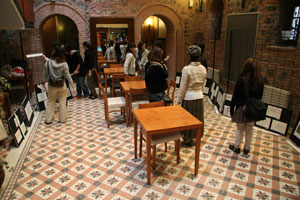 |
|
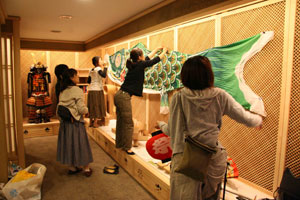 |
| Preparing for exhibition |
|
Changing exhibitions at Institute of Japanese Culture Studies |
|
|
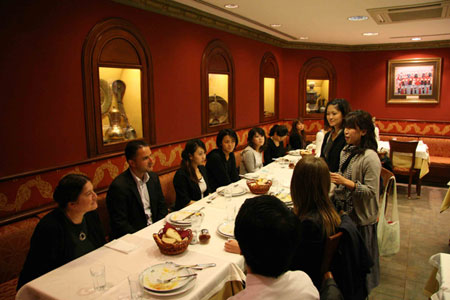 |
| Lunch with Ms. Ozen,Acting Dean |
|
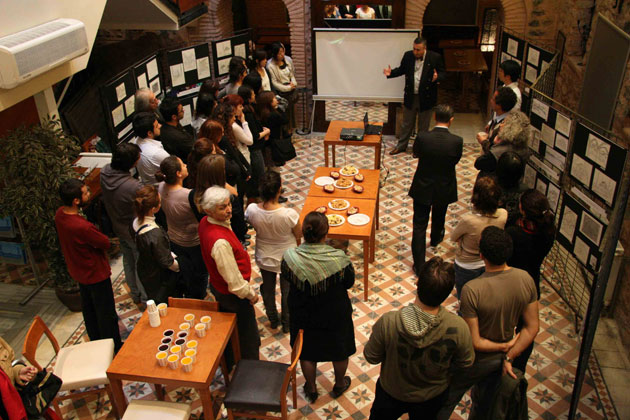 |
| Greeting by Mr. Ahmet Eyuce, Dean of Faculty of Architecture and Design of Bahcesehir University |
|
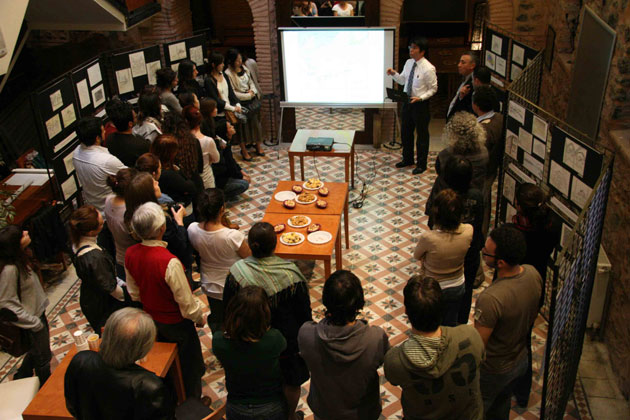 |
Explanation of Curriculum of MWU and ICSA in Istanbul by Associate Prof. Yanagisawa
|
|
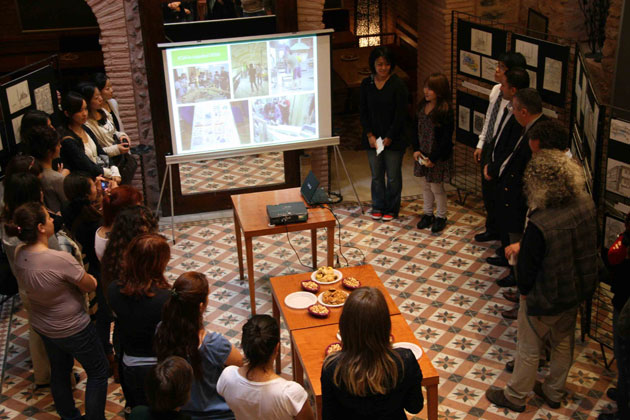 |
Speech by student representatives
|
|
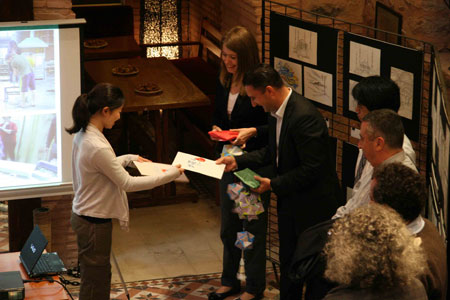 |
| Greeting by student representative |
|
|
|
Thursday, October 7, 2010
Visit to traditional wooden houses in Zeyrek |
|
|
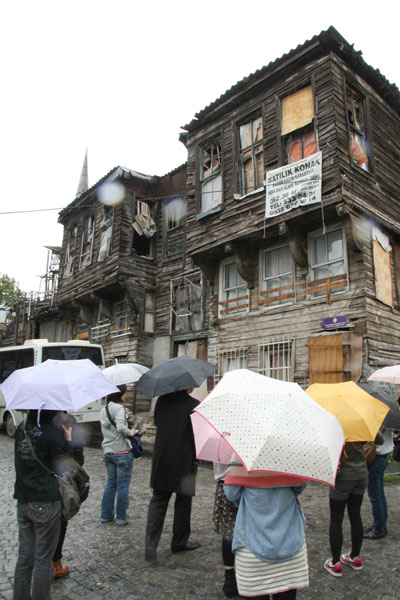 |
Traditional wooden houses in Zeyrek
|
|
 |
The region of Zeyrek was named after this building, Zeyrek Camii
|
|
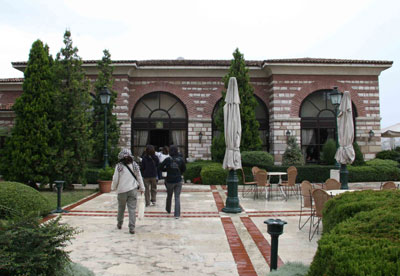 |
Zeyrekhane
|
|
 |
| Interior view of Zeyrekhane |
|
 |
| Grave of architect Sinan |
|
 |
| Visit to houses that KUDEB restored in Suleymaniye |
|
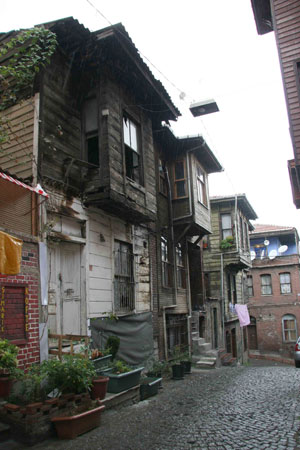 |
|
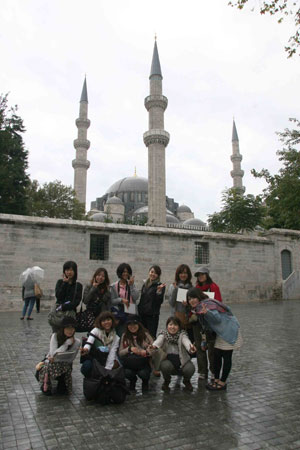 |
| Traditional wooden houses in Suleymaniye |
|
Suleymaniye Gami |
|
|
 |
| Preparing for exhibition of sketches of Turkish architectures |
|
 |
|
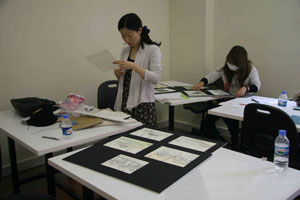 |
| Preparing exhibits |
|
Preparing exhibits |
|
|
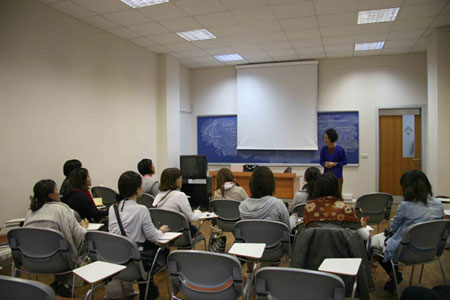 |
| Lecture about the process of the westernization of Ottoman Empire. Lecture was given by Ms. Aoki, who was part-time teacher of Bahcesehir University and specialized in history of art and architecture |
|
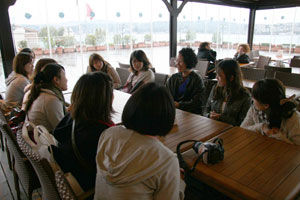 |
|
 |
| Tea braek with Ms. Aoki |
|
Dinner |
|
|
|
|
Wednesday, October 6, 2010
Practical training on conservation and restoration at
KUDEB ( Conservation and Implementation Working Group in Istanbul) |
|
|
 |
|
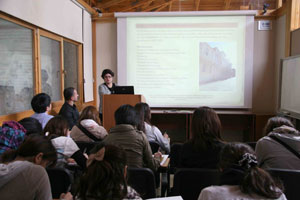 |
| Visit to KUDEB |
|
Explanation of activities by KUDEB |
|
|
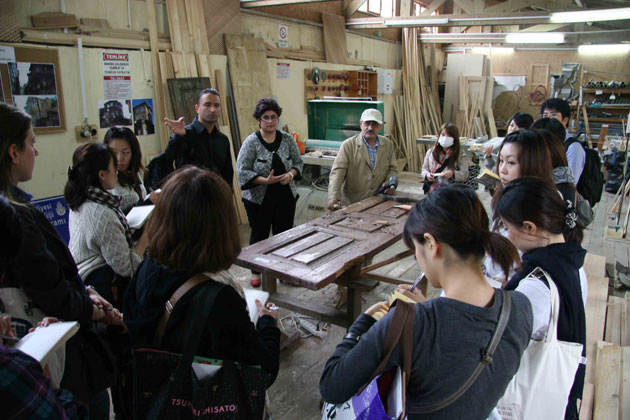 |
| Interior view of KUBEB atelier |
|
 |
Restoration of front door that was constructed approximately 180 years ago
|
|
 |
| Peeling paint surface using a spatula and dryer |
|
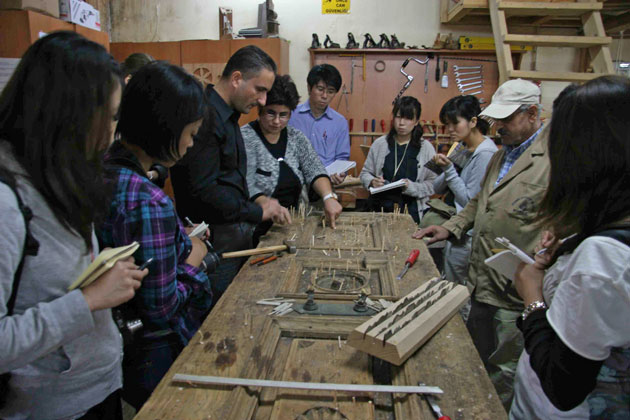 |
Explanation of the restotation of a front door constructed approximately 200 years ago.
Restoration of the front door was requested by UNESCO
|
|
 |
| Model of one of the basic joint methods in Turkey |
|
 |
| Visit to wooden houses that were restored by KUDEB |
|
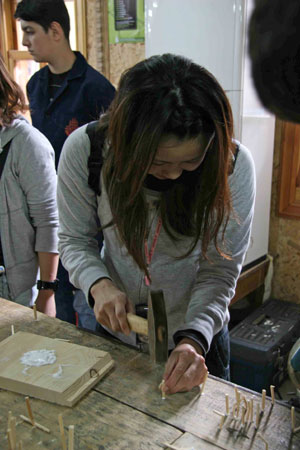 |
|
 |
| Japanese students experiencing of door restoration |
|
Japanese students experiencing of door restoration |
|
|
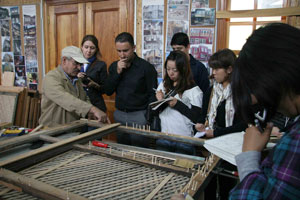 |
|
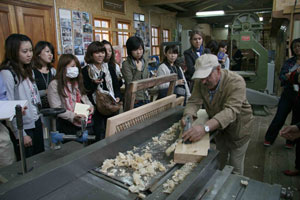 |
| Window frames that were under repair during vist |
|
Demonstration of the use of planes |
|
|
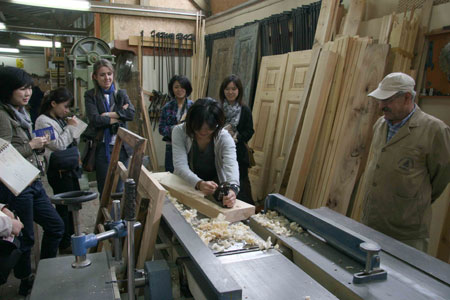 |
| Japanese students experiencing wood planing |
|
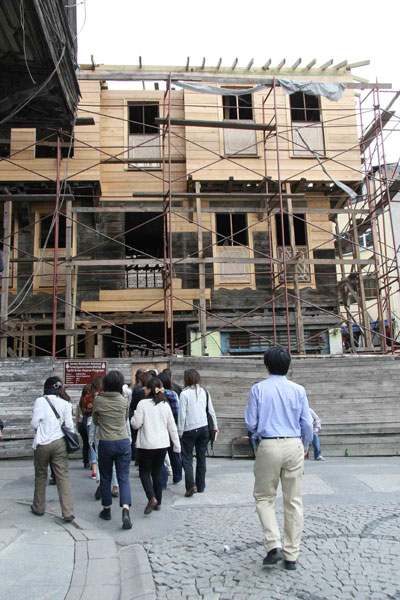 |
| Site visit to an ongoing restoration by KUDEB |
|
 |
|
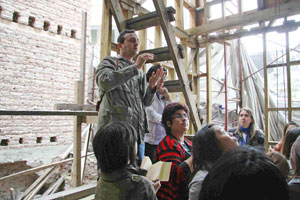 |
Construction site
|
|
Explanation of restoration by architect |
|
|
 |
|
 |
Visit to a building restored by KUDEB
|
|
Interior view |
|
|
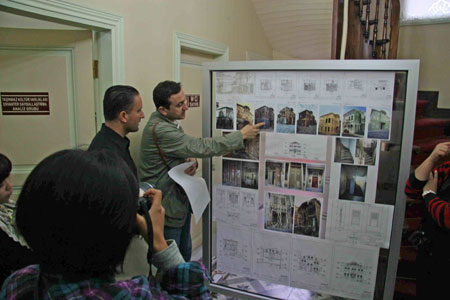 |
| Explanation of the process of restoration |
|
 |
| Presenting an appreciation "Origami" gift to the people of KUDEB |
|
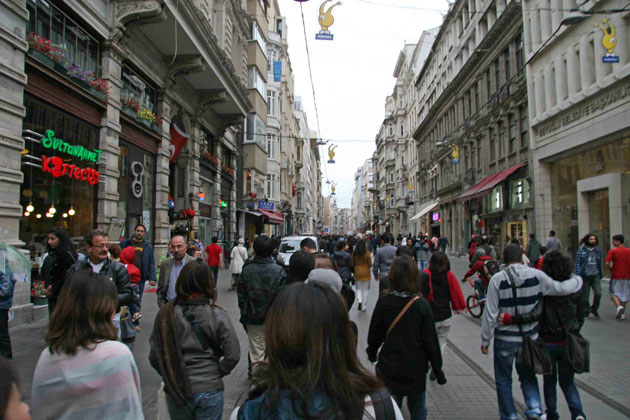 |
| Istiklal street |
|
 |
| Dinner |
|
|
|
Tuesday, October 5, 2010
Visit to traditional wooden houses in Soloz |
|
|
 |
| Photograph with the people in the atelier |
|
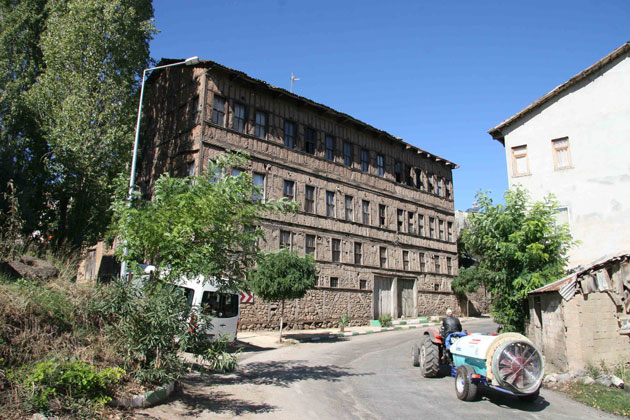 |
Traditional wooden house in Soloz which is a small town in the southern coast of the Iznik lake
|
|
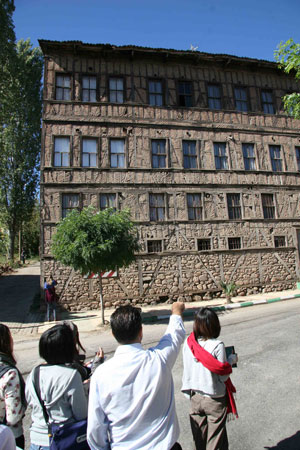 |
|
 |
| Traditional wooden house in Soloz |
|
Traditional wooden house in Soloz |
|
|
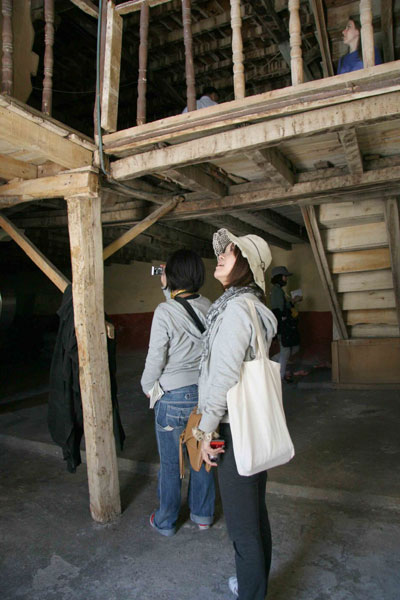 |
| Interior view of the the first floor of wooden house |
|
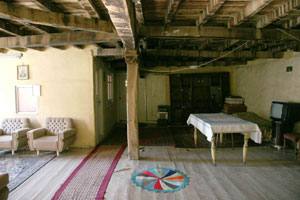 |
|
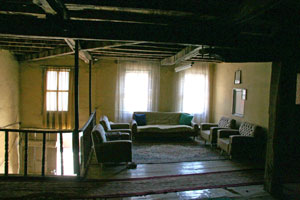 |
| Interior view of the the second floor of wooden house |
|
Interior view of the the second floor of wooden house |
|
|
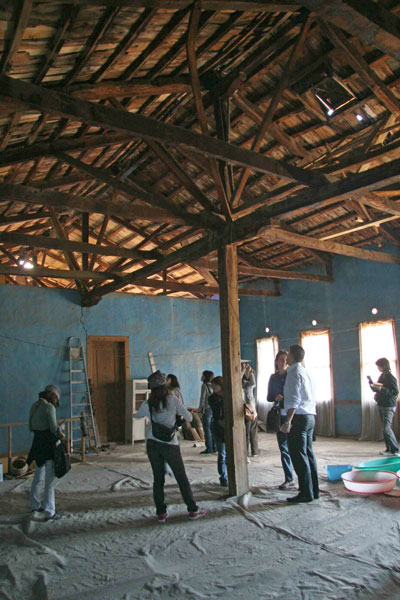 |
| Interior view of the the fourth floor of wooden house |
|
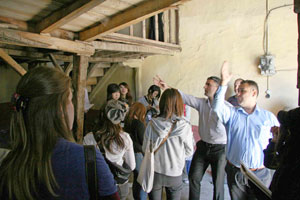 |
|
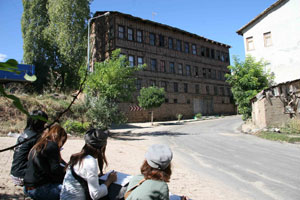 |
Explanation of wooden house by the owner
|
|
Sketching wooden house |
|
|
 |
| View of Soloz from the top of the mountain |
|
 |
|
 |
| Lunch |
|
Crossing Sea of Marmara by ferry
|
|
|
|
|
Monday, October 4, 2010
Practical training at Iznik Foundation Tiles in Iznik |
|
|
 |
| Panoramic view of the rural scenery, from bus on the way to Iznik |
|
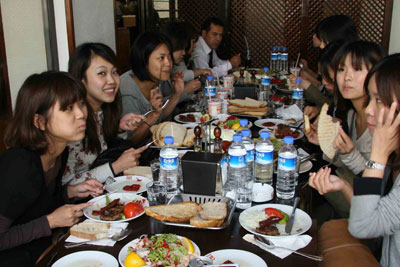 |
| Lunch in Iznik |
|
 |
|
 |
| The atelier of the Iznik foundation in the suburbs |
|
Explanation of Izink tile and production process of ceramics
|
|
|
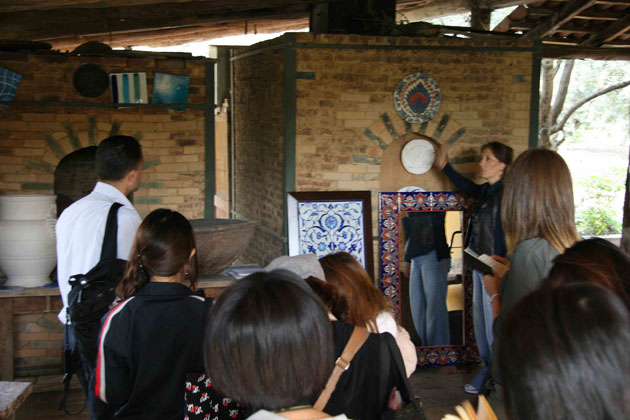 |
Traditional kiln to burn tiles and ceramics
|
|
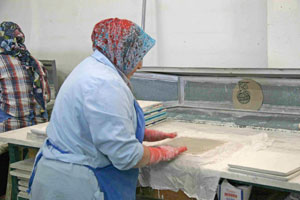 |
|
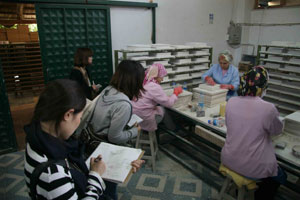 |
| Process of molding a tile |
|
Process of grinding a tile
|
|
|
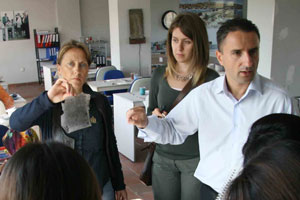 |
|
 |
Original design of painting
|
|
By using the carbon powder to copy a design to a container |
|
|
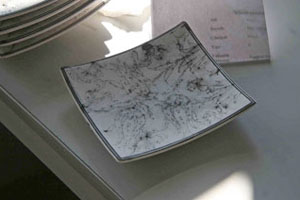 |
|
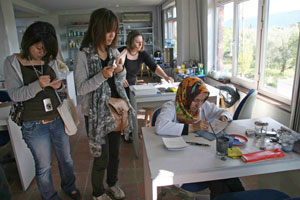 |
| The container with the copied a design |
|
Draft ing with black pigments |
|
|
 |
| Process of painting |
|
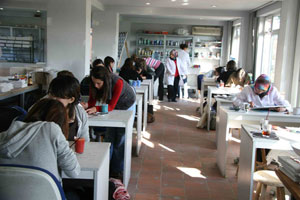 |
|
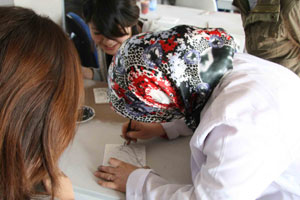 |
| Japanese students experiencing painting of Iznik tile |
|
Demonstration of painting of Iznik tile |
|
|
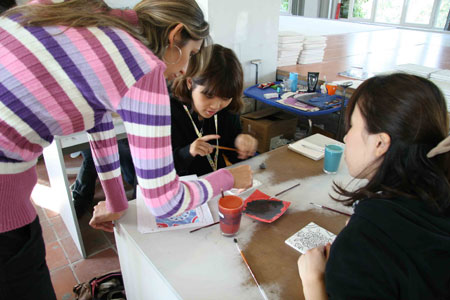 |
| Guidance of the painting metod by the people in the atelier |
|
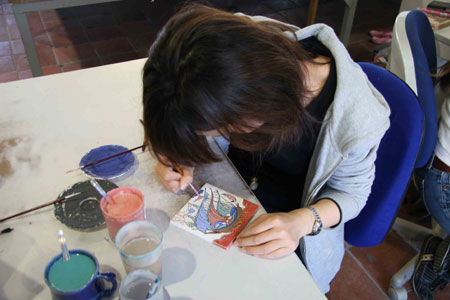 |
| Student experiencing Iznik tile painting |
|
 |
| Finished tiles |
|
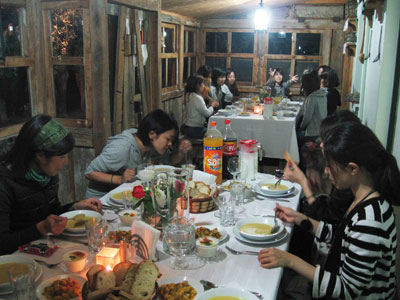 |
| Dinner at guesthouse of Iznik Foundation Tiles |
|
|
|
Sunday, October 3, 2010
Istanbul Tour 2 |
|
|
 |
|
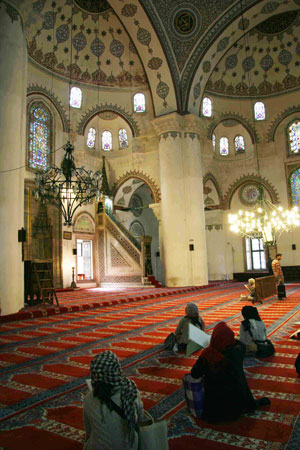 |
| Mihrimah Sultan Camii designed by Mimar Sinan |
|
Interior view of Mihrimah Sultan Camii |
|
|
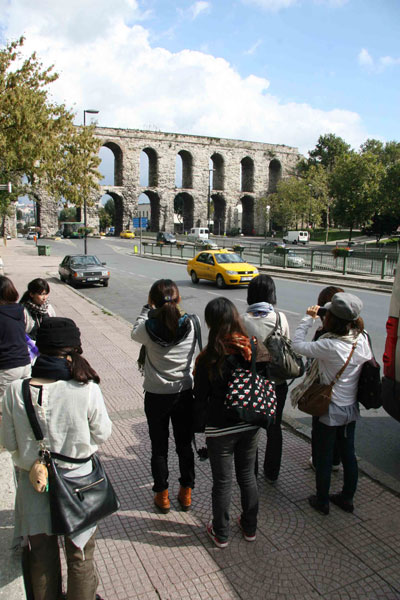 |
| Valens Aqueduct |
|
 |
| Eyup Sultan Camii |
|
 |
| Photograph in front of Eyup Sultan Camii |
|
 |
|
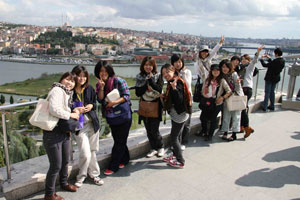 |
| Going to Pierre Loti by gondola |
|
Observatory of Pierre Loti |
|
|
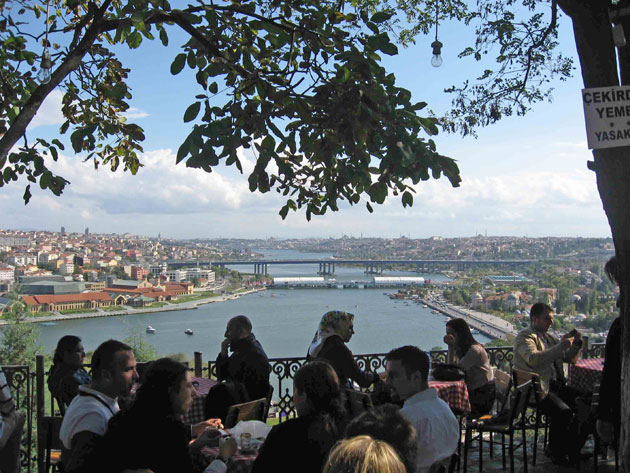 |
View from cafe at Pierre Loti
|
|
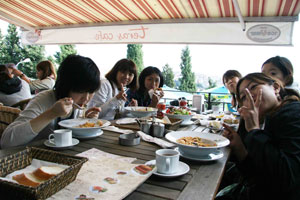 |
|
 |
| Lunch at Pierre Loti |
|
Rahmim Koc Museum |
|
|
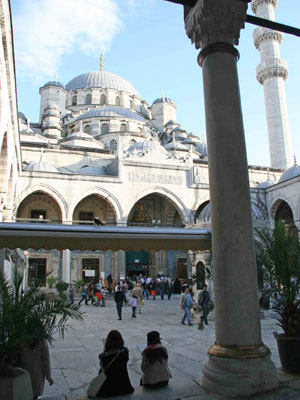 |
|
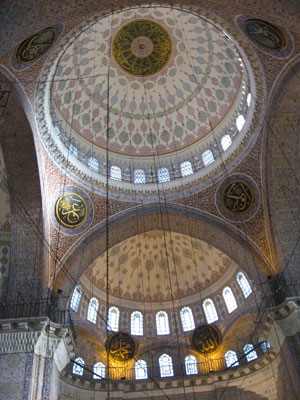 |
| Yeni Camii |
|
Interior view of Yeni Camii |
|
|
 |
|
 |
| Egyptian bazaar |
|
Rustem Pasa Camii |
|
|
 |
| Front yard of Rustem Pasa Camii |
|
 |
Interior view of Rustem Pasa Camii
|
|
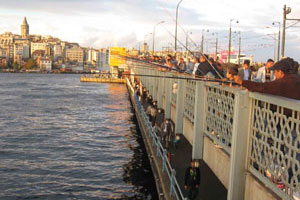 |
|
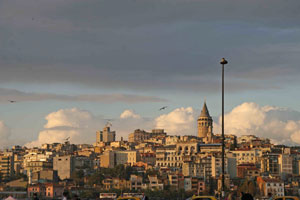 |
| Galata Bridge |
|
Galata Tower |
|
|
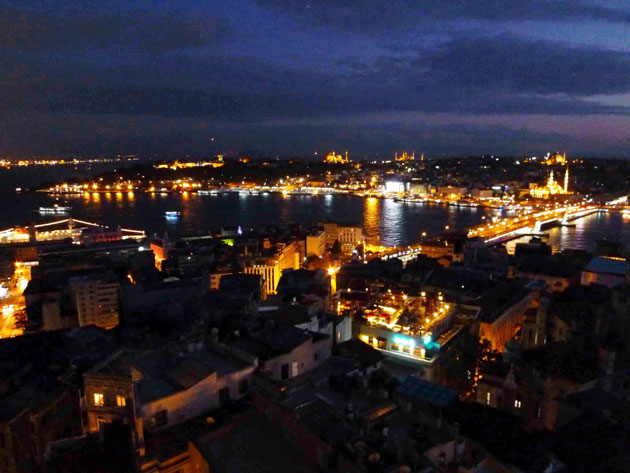 |
| Night view of Istanbul from Galata Tower |
|
|
|
Saturday, October 2, 2010
Bursa Tour |
|
|
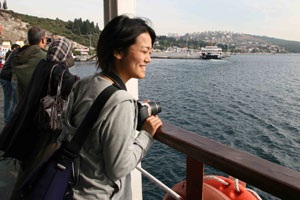 |
|
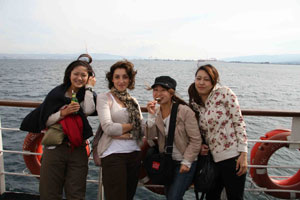 |
| Sea of Marmara ferry ride from Istanbul to Bursa |
|
Going to Bursa with a Turkish student who visited Japan in this summer and was from Bursa |
|
|
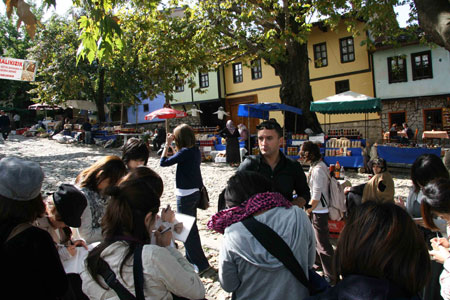 |
| Cumalikizik Cumalikizik is the traditional village with a history of over 700 years |
|
 |
Cumalikizik The house in the village has a courtyard.
aThe residentiall space includes a wooden frame with earthen walls, supported on a foundation constructed from native rocks |
|
|
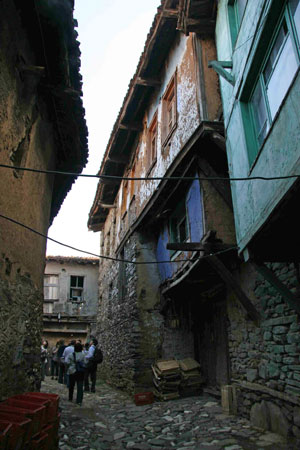 |
Cumalikizik
The design of the building overhang allows the women of Islam to view the street |
|
|
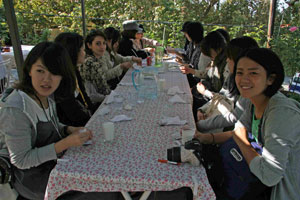 |
|
 |
| Lunch in Cumalikizik |
|
Eating Gozleme
Gozleme is a savory traditional Turkish handmade pastry |
|
|
 |
| Pirinc Han |
|
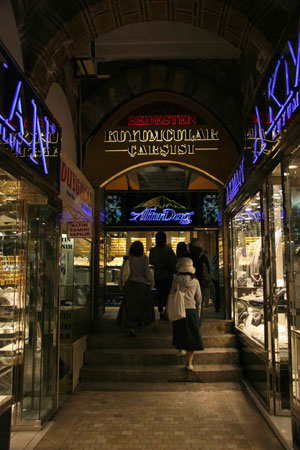 |
|
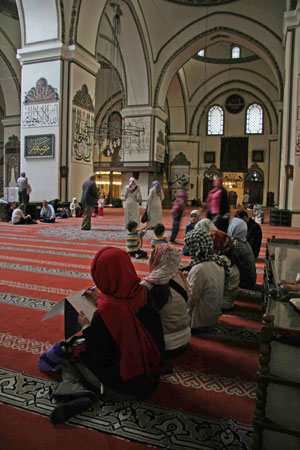 |
| Bazaar (Kapali Carisi) |
|
Interior view of Ulu Camii
|
|
|
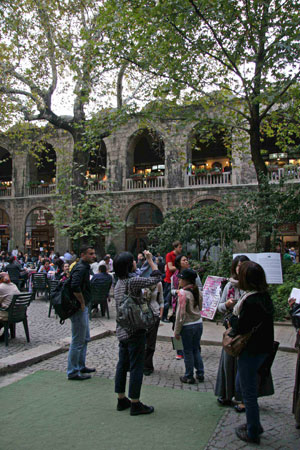 |
|
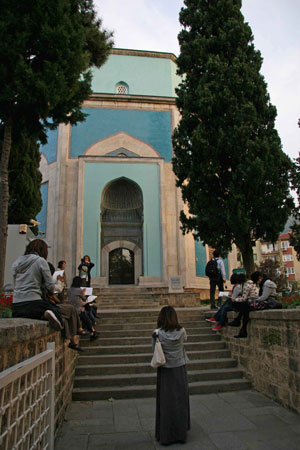 |
| Koza Han |
|
Yesil Turbe |
|
|
 |
| Yesil Camii |
|
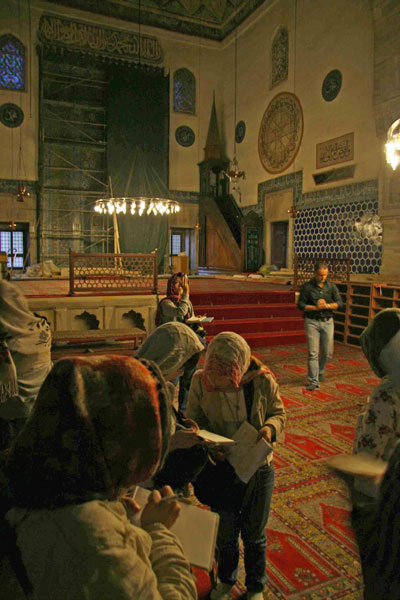 |
Inteior view of Yesil Camii
|
|
|
|
Friday, October 1, 2010
Practical training at Glass Furnace in Istanbul
Visit to gallery in Dolmabahce Palace |
|
|
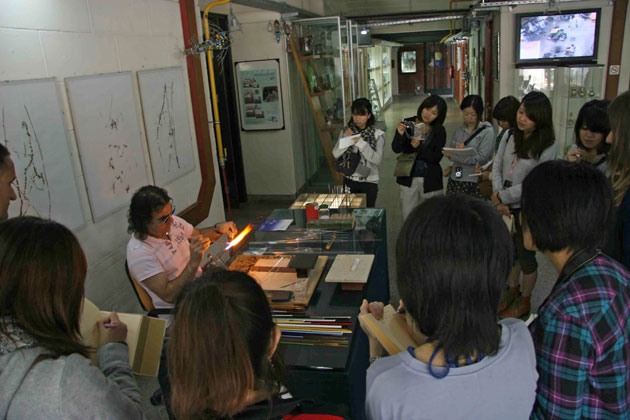 |
| Production of glasswork "Semazen"that has the shape of the believer of the Mevlevi religious sect. |
|
 |
|
 |
| The glasswork,represents a follower dancing around in a skirt |
|
Explanation of how to make accessories of the glass bead called "Boncugu" |
|
|
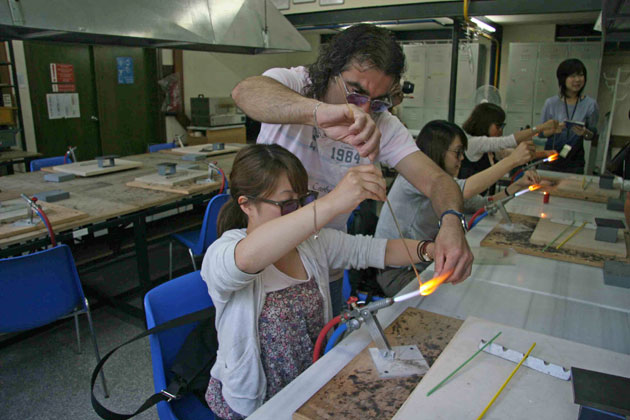 |
| Japanese students experiencing the production of "Boncugu" |
|
 |
| Japanese students experiencing the production of "Boncugu" |
|
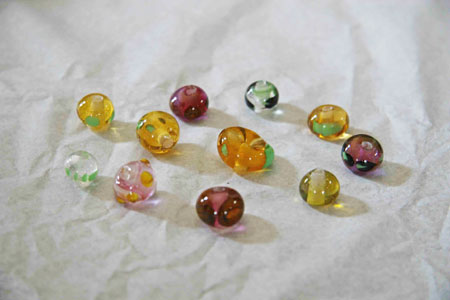 |
| Boncugu |
|
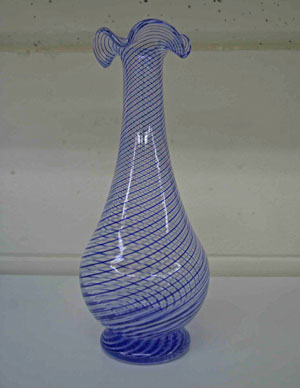 |
|
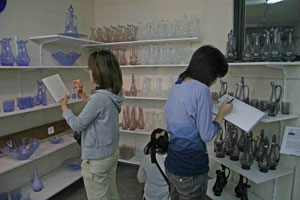 |
Vase with "Cesm-i Bulbul" pattern.
The Cesm-i Bulbul pattern was used in the palace. |
|
Sketching products with the Cesm-i Bulbul pattern |
|
|
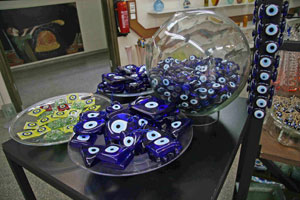 |
|
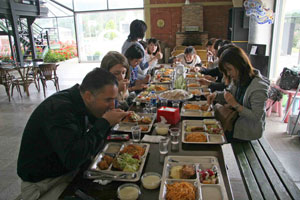 |
"Nazar Boncugu" which is a traditional lucky charm of Turkey
|
|
Lunch at the atelier |
|
|
 |
| The traditional kiln to make Nazar Boncugu |
|
 |
|
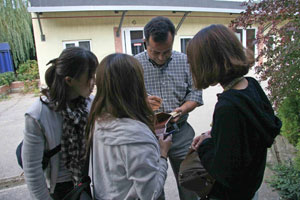 |
| Making a traditional pitcher that is called "Ibrik" |
|
Interacting bus driver |
|
|
 |
|
 |
| Citizen's gallery in Dolmabahce Palace |
|
Interior view of citizen's gallery in Dolmabahce Palace |
|
|
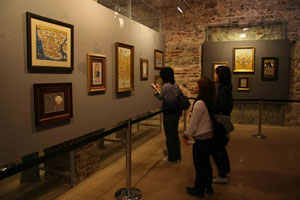 |
|
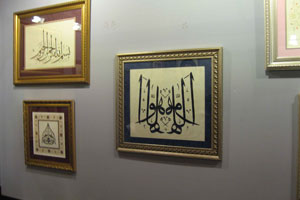 |
| Exhibition of Minyatur |
|
Document called "Hat" |
|
|
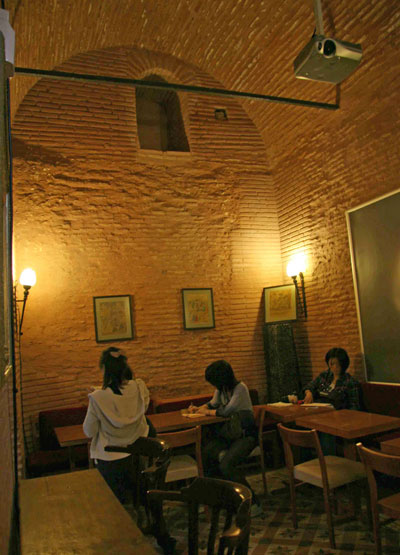 |
| Sketching at the cafe at Bahcesehir University.The cafe was originally a water tank that was constructed approximately 150 years ago |
|
|
|
Thursday, September 30, 2010
Practical Training at Glass Furnace in Istanbul |
|
|
 |
|
 |
| Entrance at the Glass Furnace |
|
Explanation of how to make the typical glass and interior view of workshop and glass atelier |
|
|
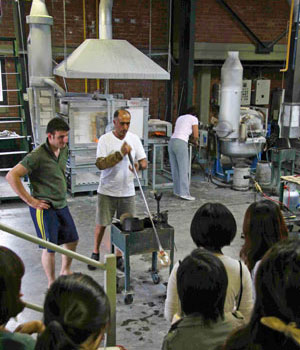 |
|
 |
| Demonstration of production of blown glass |
|
Demonstration of production of blown glass |
|
|
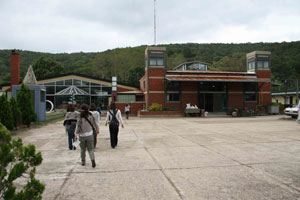 |
|
 |
| Visiting facilities at the glass atelier |
|
Lunch at the glass atelier |
|
|
 |
| Japanese students experiencing the production of blown glass |
|
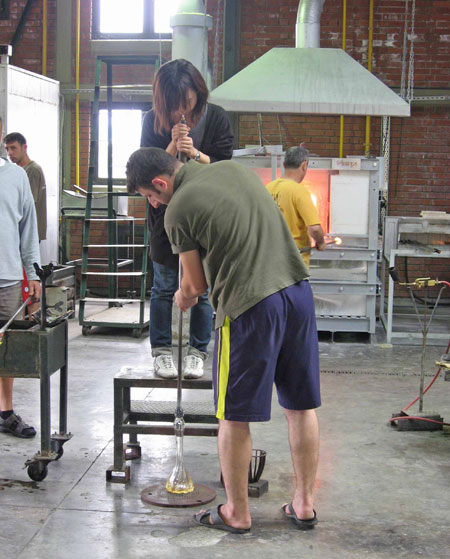 |
| Japanese students experiencing the production of blown glass |
|
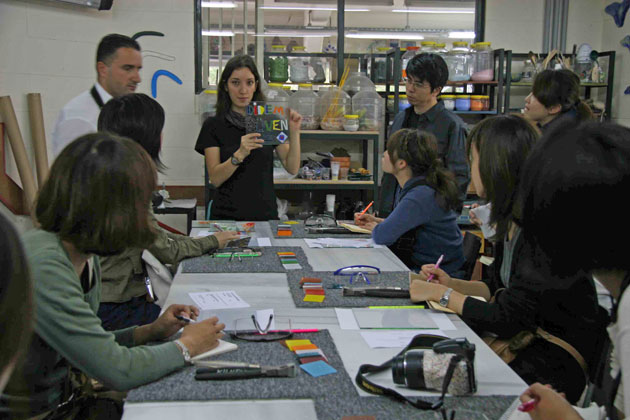 |
Explanation of how to make glasswork by technique called "Fuzyon"
|
|
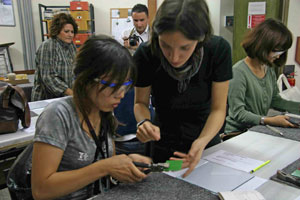 |
|
 |
| Guidance by glass atelier staff |
|
Practiccal training of glasswork by technique called "Fuzyon" |
|
|
 |
| Cutting out glass chips that become a pattern with a special tool. |
|
 |
|
 |
| Finished product |
|
Finished product |
|
|
 |
| Presenting an appreciation "Origami" gift to the people of atelier |
|
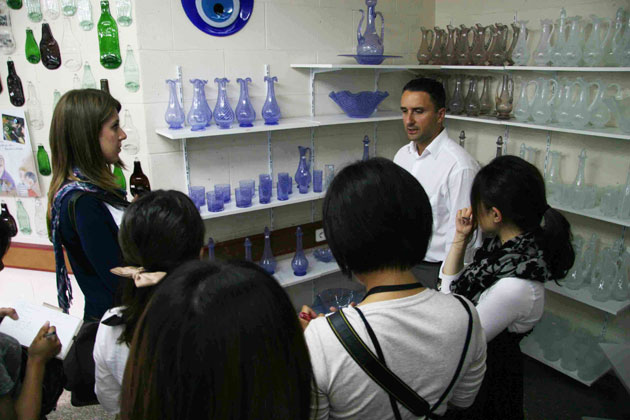 |
| Explanation of Cesm-i Bulbul which is the traditional glass arts technique of Turkey |
|
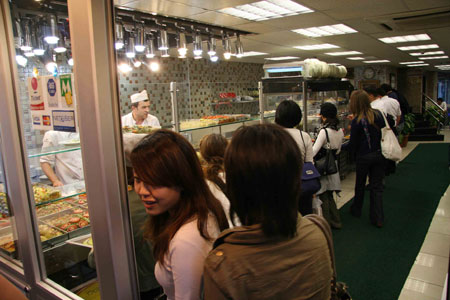 |
| Dinner in the town of Besiktas |
|
|
|
Wednesday, September 29, 2010
Visit to preservation restoration site in Dolmabahce Palace in Istanbul |
|
|
|
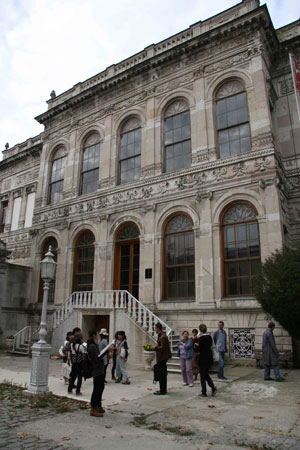 |
|
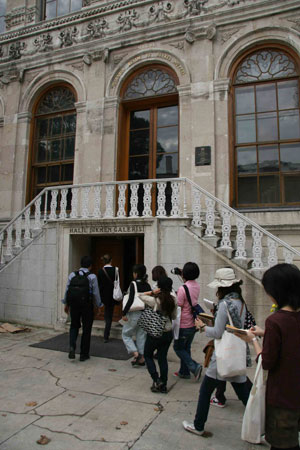 |
| The building under restoration for Crown Prince |
|
The building under restoration for Crown Prince |
|
|
 |
| Lunch in Bahce Cafe at Bahcesehir University |
|
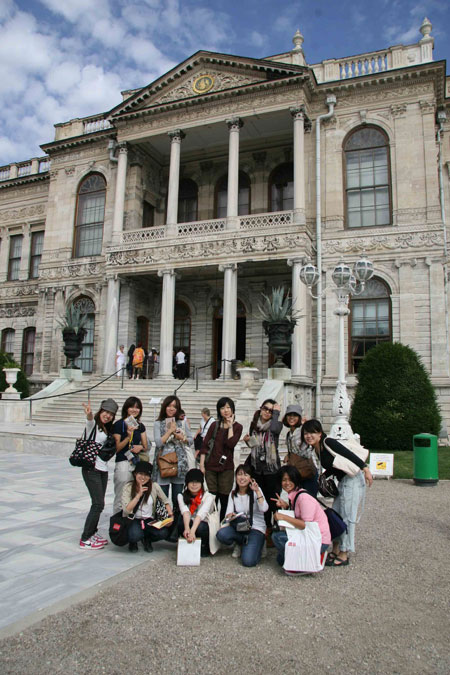 |
| Photograph in front of Dolmabahce Palace |
|
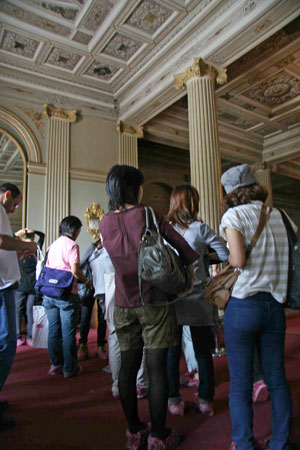 |
|
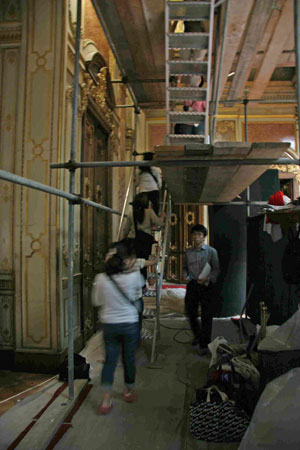 |
| Palace tour |
|
Heading to the site where the ceiling is beingrestored in the palace |
|
|
 |
|
 |
| The site where the ceiling is being restored in the palace |
|
Explanation of restoration of the ceilling by worker |
|
|
 |
|
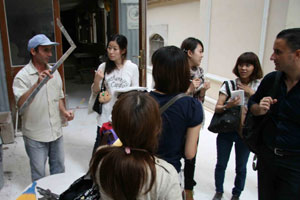 |
| Atelier of stone decoration |
|
Explanation of tools used to process stone |
|
|
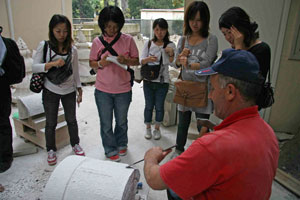 |
|
 |
| Demonstration of processing of stone |
|
Demonstration of processing of stone |
|
|
 |
| Students experiencing processing of stone. |
|
 |
| Photograph with the people in the atelier of stone decoration |
|
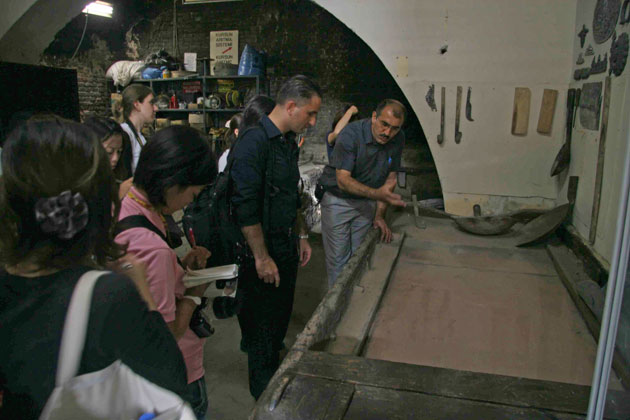 |
| Atelier of zinc |
|
 |
| Atelier where stucco stone pattern is produced |
|
 |
| Dinner at Denice Cafe in Bahcesehir University |
|
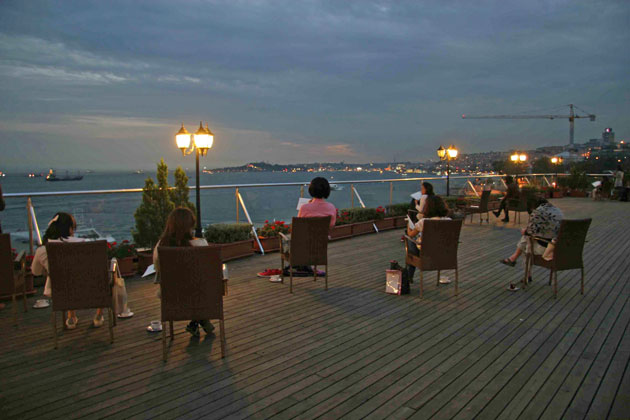 |
| Sketching the Bosphorus at the roof terrace of Bahcesehir University after dinner |
|
|
|
Tuesday, September 28, 2010
Practical Training on conservation and restoration at Ateliers of Yildiz Palace in Istanbul |
|
|
|
 |
Copying the original picture of the decoration
|
|
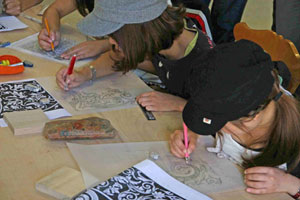 |
|
 |
| Copying the original picture of the decoration |
|
Presenting an appreciation"Origami" gift to the people of the atelier. |
|
|
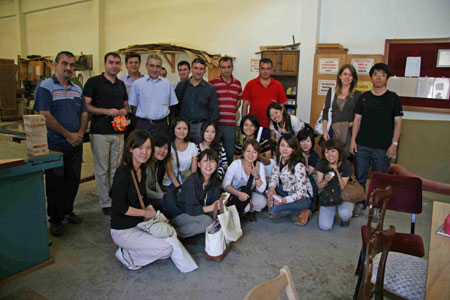 |
| Photograph with the people in the restoration atelier of furniture |
|
 |
| Atelier for restoration of gold foil |
|
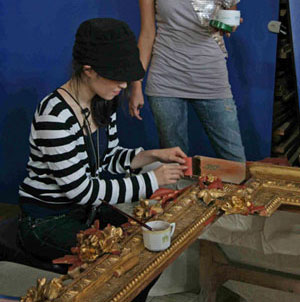 |
|
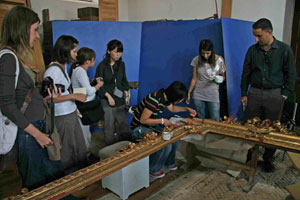 |
| Experiencing the restoration of gold foil |
|
Experiencing the restoration of gold foil |
|
|
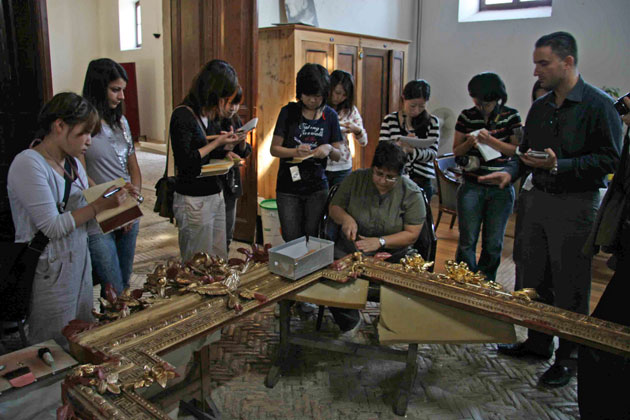 |
| Fnished work of gold foil |
|
 |
| Palace stable that was is now used as one of the ateliers |
|
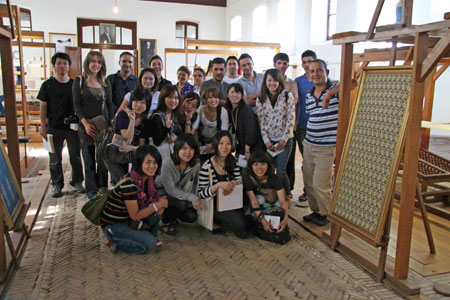 |
| Photograph with the people in the restoration atelier of cloth crossing and carpet |
|
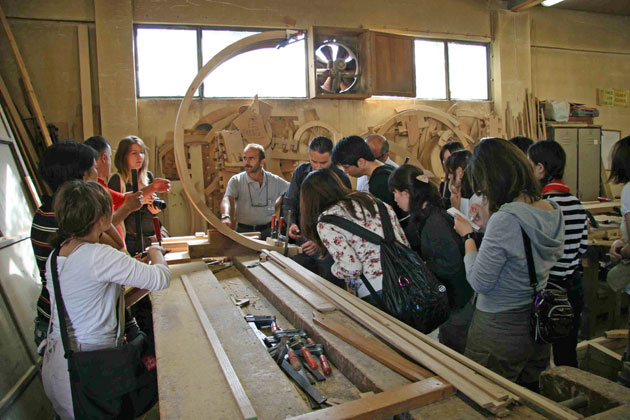 |
| Explanation of the processing of a window frame at the atelier |
|
 |
|
 |
| Explanation of floor materialto be used for marquetry |
|
Floor material of marquetry |
|
|
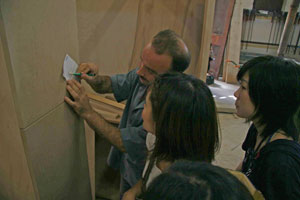 |
| Explanation of fixed furniture |
|
|
 |
|
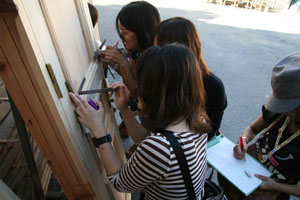 |
| Measuring window frames and doors |
|
Measuring the door |
|
|
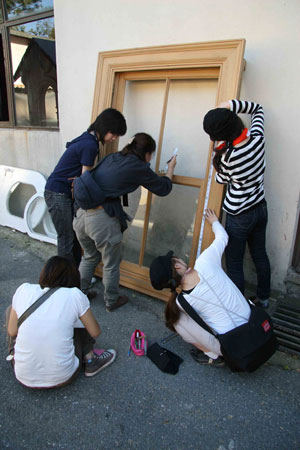 |
|
 |
| Measuring the window frame in Dolmabahce Palace |
|
Turkish carpenter explaining the frame shape |
|
|
|
|
Tuesday, September 28, 2010
Practical training on conservation and restoration at Ateliers of Yildiz Palace in Istanbul |
|
|
|
| Today, we had practical training on conservation and restoration at the Ateliers of Yildiz Palace. The ateliers are under the administration of the Department of National Palaces, the Grand National Assembly of Turkey. The conservation and restoration work of all the palaces in Turkey, and the interior decoration and architecture of the Ottoman Empire that can be found in various countries in the world, are done at the ateliers. The ateliers are mainly divided into two groups, the interior decoration ateliers and the architectural ateliers. We only visited the interior decoration ateliers today, and saw the wooden atelier, the ornament atelier, the textile atelier, and the glass and ceramic atelier. Students copied the original pictures of the closet and candlestick decorations. |
|
 |
Explanation of restoration of the chest from Ottoman Empire
|
|
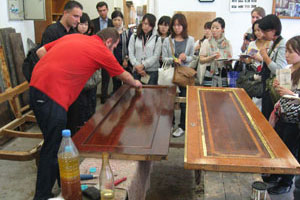 |
|
 |
| Restoration painting of closet door in Dolmabahce Palace |
|
Making a wooden adornment using a machine that rotates at high speed. |
|
|
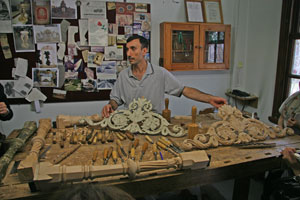 |
|
 |
Handmade wooden adornments made using
more than 30 kinds of chisels are used |
|
Explanation of restoration of shellfish adornment called "sedef" |
|
|
 |
Explanation of restoration of the cloth
|
|
 |
Explanation of restoration of the glass and pottery
|
|
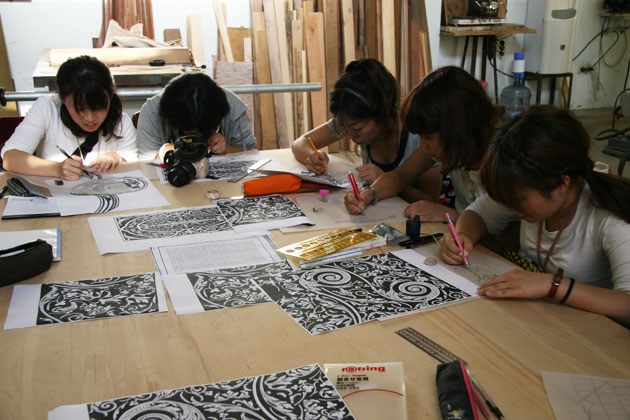 |
Copying the original picture of the decoration
|
|
 |
| Interior of Ateliers of Yildiz Palace |
|
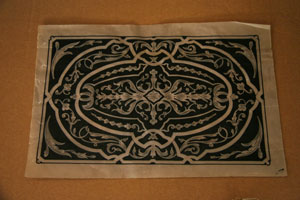 |
|
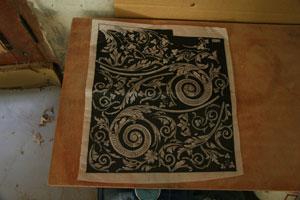 |
| Original picture of closet decoration |
|
Original picture of candlestick decoration |
|
|
|
 |
|
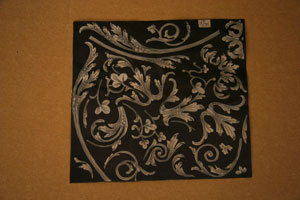 |
| Original picture of candlestick decoration |
|
Original picture of candlestick decoration |
|
|
|
|
Sunday, September 26, 2010
Edirne Tour |
|
|
| Today, we visited Edirne, close to the borders of Turkey, with Greece and Bulgaria. This city was formerly called Hadrianopolis, which was named after the Roman Emperor Hadrian, and also served as the capital city of the Ottoman Empire from 1365 to 1453. We toured around places including the Selimiye Mosque, which had been built by the architect Mimar Sinan and considered by Sinan to be his masterpiece, Eski Mosque which was the oldest mosque in existence in Edirne, Uc Serefeli Mosque which had four different types of minarets, Ottoman K?lliye and Hospital which had been built by Bayazit II and had a characteristic space for music therapy. Six Turkish students who had participated in the ICSA in Japan also joined us. |
|
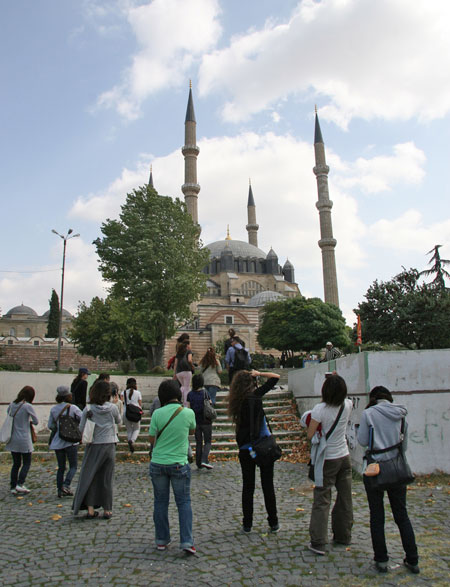 |
Selimiye Camii
Designed by Sinan,great Ottoman architect .He claims this building to be his best work.. |
|
 |
|
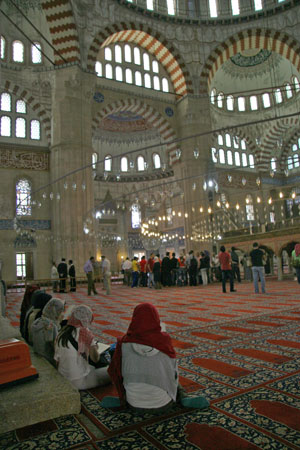 |
Dome of Selimiye Camii,
showing Islamic elements in the ceiling.
|
|
Interior view of Selimiye Camii |
|
|
 |
Selimiye Camii,
Seventy-meter high Minarets rise above the dome
|
|
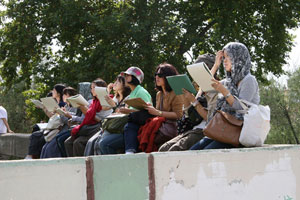 |
|
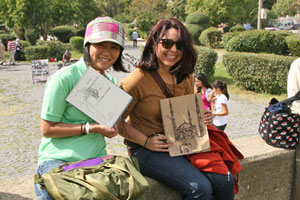 |
| Students sketching with enthusiasm |
|
A Turkish student and a Japanese student sharing their sketches |
|
|
 |
| Eski Camii |
|
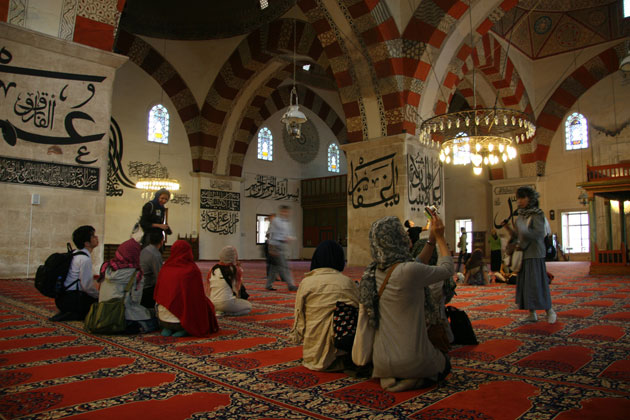 |
Interior view of Eski Camii,
Calligraphy that can be found in the Korans is drawn on the pillars.
|
|
 |
|
 |
TUc Serefeli Camii appearance
All four minaret have different shapes.
This is the spiral minaret. |
|
Courtyard of TUc Serefeli Camii
|
|
|
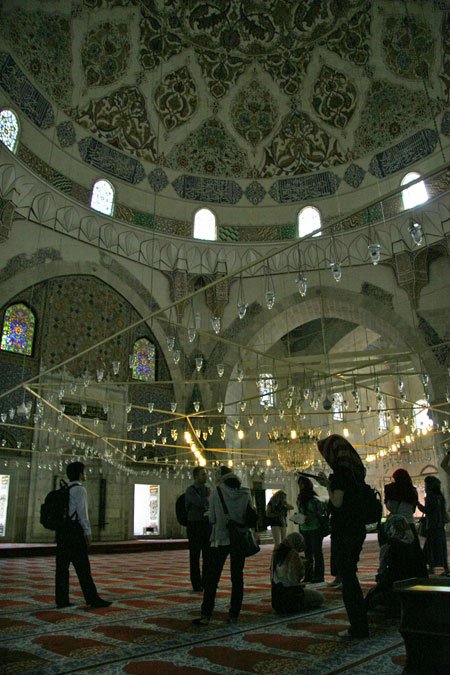 |
Interior view of TUc Serefeli Camii
|
|
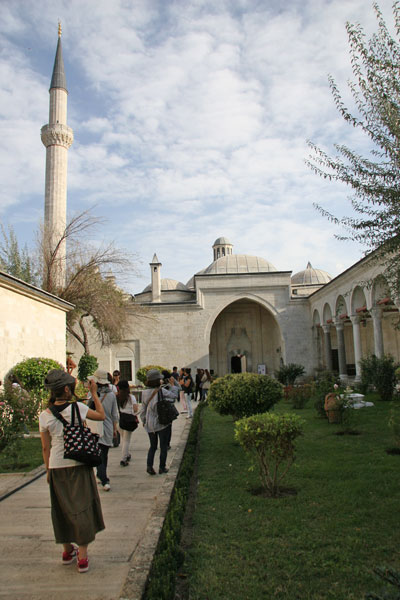 |
The courtyard of Sultan Bayazit II Hospital
|
|
 |
|
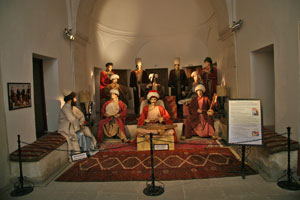 |
Interior view of Sultan Bayazit II Hospital
There is a fountain in the center. Sounds from the water fountain fill the dome. |
|
Interior view of Sultan Bayazit II Hospital
The recreation of an orchestra from the Ottoman Empire that provided musical therapy. |
|
|
|
|
Saturday, September 25, 2010
Istanbul Tour |
|
|
Today,we visited historic areas of Istanbul that were added to the UNESCO World Heritage List in 1985.
Istanbul is a major historical city where the Asian culture and European cultures mix together.
Mr. Murat,the vice-dean of the Department of Architecture and Design of Bahcesehir University and Ms Sinem, an assistant of the Department of Architecture and Design of Bahcesehir University,guided us all day.
We visited Hagia Sophia, Topkapi Palace,Sultan Ahmet Camii and the Grand bazaar. Hagia Sophia is considered to be the epitome of Byzantine architecture. Topkapi Palace was the official and primary residence in the city of the Ottoman Sultans. Sultan Ahmet Camii is known as the Blue Mosque. There were about 4,400 shops at the Grand bazaar.
|
|
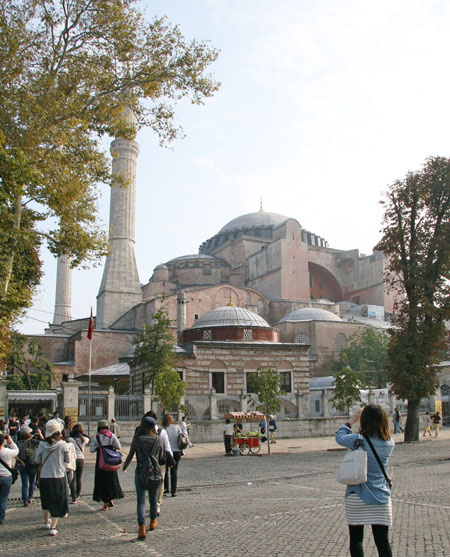 |
Hagia Sophia(Turkish: Aya Sofya)
Hagia Sophia is a former Orthodox patriarchal basilica, later a mosque, and now a museum in Istanbul, Turkey. |
|
 |
|
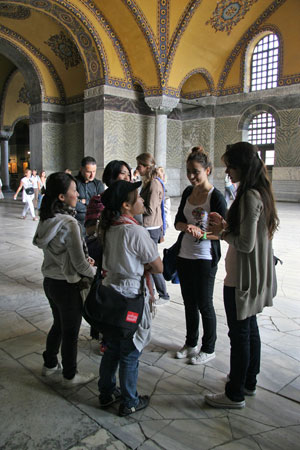 |
Interior view of Hagia Sophia,
showing Islamic elements in the ceiling.
|
|
Interacting with Turkish students who came to Japan and studied together in lprevious years . |
|
|
 |
|
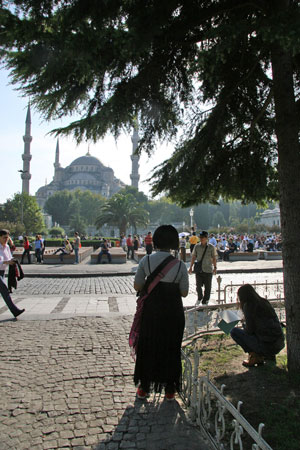 |
Interior view of Topkapi Palace Harem
Topkapi Palace is a palace in Istanbul, Turkey, which was the official and primary residence in the city of the Ottoman Sultans. |
|
Sultan Ahmet Camii
Sultan Ahmet Camii is a historical mosque in Istanbul, the largest city in Turkey and the capital of the Ottoman Empire |
|
|
 |
Interior view of Sultan Ahmet Camii
The main dome and blue tiles that gave the mosque its nickname, the Blue Mosque. |
|
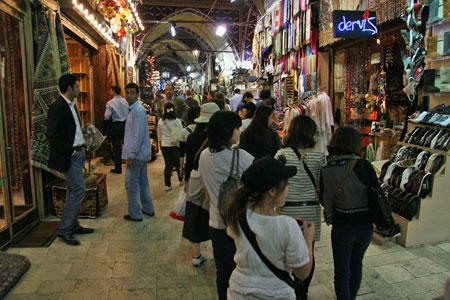 |
Street of Grand Bazaar
Grand Bazaar is one of the largest and oldest covered markets in the world, with more than 58 covered streets and over 1,200 shops which attract between 250,000 and 400,000 visitors daily. |
|
|
|
Friday, September 24, 2010
Arrival at Ataturk International Airport, Istanbul
Visit to Bahcesehir University and Institute of Japanese Culture Studies |
|
|
 |
| Arrival at Ataturk International Airport, Istanbul |
|
 |
| Students meeting with President of Bahcesehir University |
|
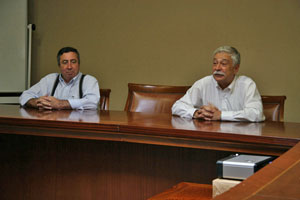 |
|
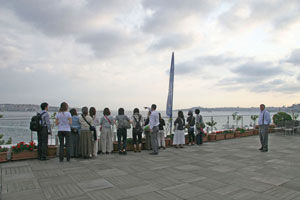 |
(Right)President of Bahcesehir University
(Left) Ahmet Eyuce, the Deen of Faculty of Architecture and Design of Bahcesehir University |
|
Terrace |
|
|
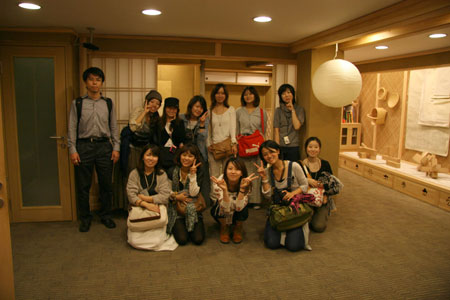 |
| Institute of Japanese Culture Studies |
|
|
| ■Hotel |
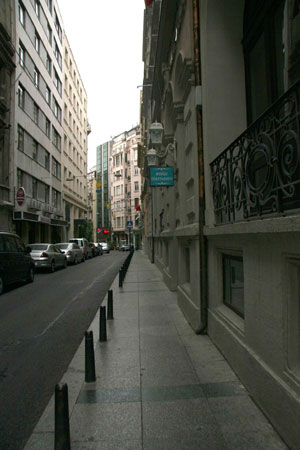 |
|
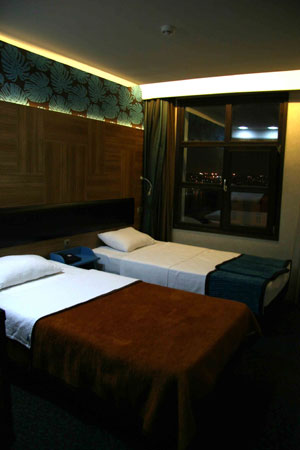 |
| Road in front of hotel |
|
Room |
|
|
|
 |
|
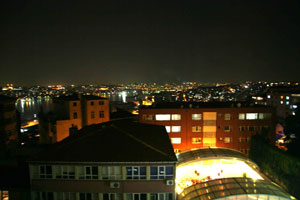 |
| Lobby |
|
View |
|
|
| ■Schedule |
|
|
|
|
Thursday, September 23, 2010
|
|
Departure from KIX for Istanbul |
|
|
|
|
Friday, September 24, 2010
|
|
Arrival at Ataturk International Airport, Istanbul
|
|
|
Visit to Bahcesehir University and Institute of Japanese Culture Studies |
|
|
|
|
Saturday, September 25, 2010
|
|
Istanbul tour
|
|
|
|
|
Sunday, September 26, 2010
|
|
Edirne tour
|
|
|
|
|
Monday, September 27, 2010
|
|
Practical training on conservation and restoration at Ateliers of Yildiz Palace in Istanbul
|
|
|
Practical training on miniature and calligraphy at Ateliers of Yildiz Palace in Istanbul |
|
|
|
|
Tuesday, September 28, 2010
|
|
Same as above
|
|
|
|
|
Wednesday, September 29, 2010
|
|
Visit of preservation restoration site in Dolmabahce Palace in Istanbul |
|
|
|
|
Thursday, September 30, 2010
|
|
Practical training at Glass Furnace in Istanbul |
|
|
|
|
Friday, October 1, 2010
|
|
Same as above
|
|
|
|
|
Saturday, October 2, 2010
|
|
Bursa tour |
|
|
|
| Sunday, October 3, 2010 |
|
Istanbul tour |
|
|
|
| Monday, October 4, 2010 |
|
Practical training at Iznik Foundation Tiles in Iznik |
|
|
|
|
Tuesday, October 5, 2010
|
|
Same as above |
|
|
|
| Wednesday, October 6, 2010 |
|
Practical training on conservation and restoration at Conservation and Implementation Working Group(KUDEB) in Istanbul
|
|
|
|
| Thursday, October 7, 2010 |
|
Same as above |
|
|
The exhibition of sketches of Turkish architectures made by Japanese students at Bahcesehir University
|
|
|
|
| Friday, October 8, 2010 |
|
Departure from Ataturk International Airport for Japan |
|
|
|
|
Saturday, October 9, 2010
|
|
Arrival at KIX
|
|
|
|
| >>TOP |
Copyright 2005-2010 Mukogawa Women's University.All rights reserved.
|





























































































































































































































